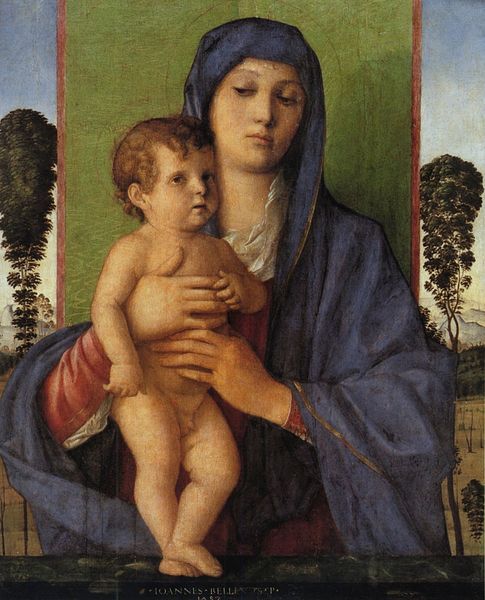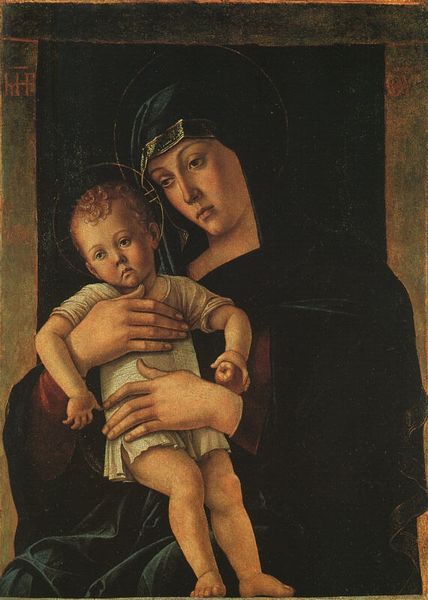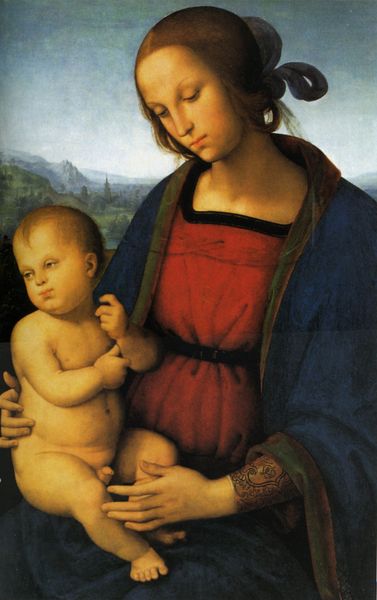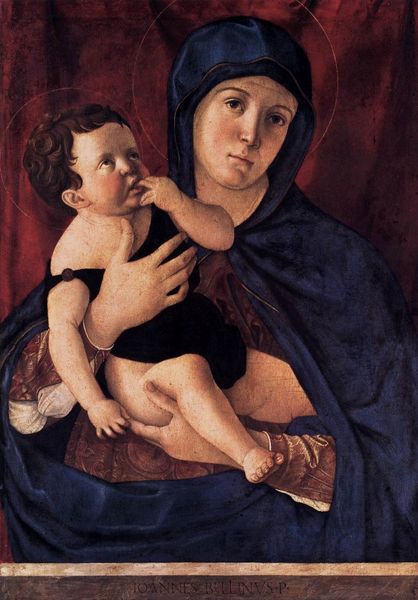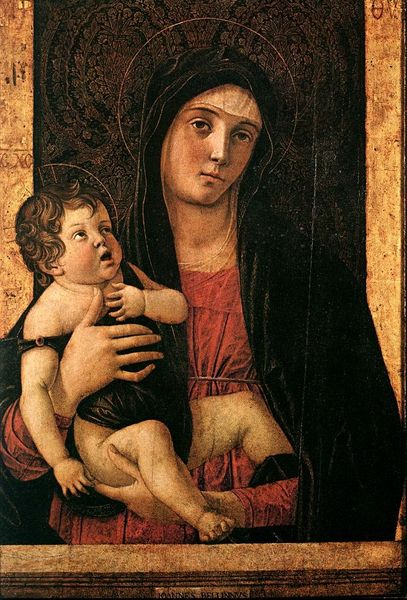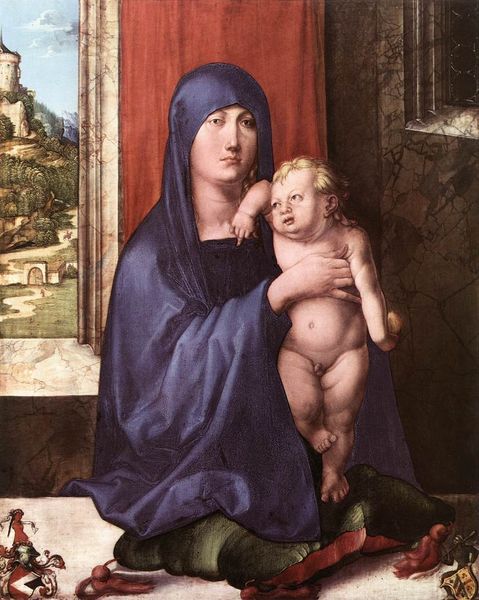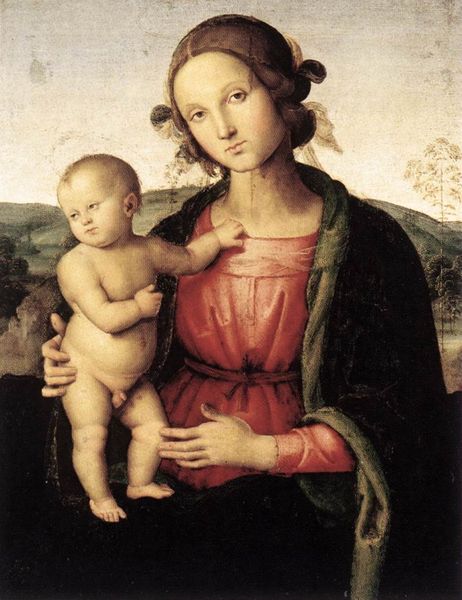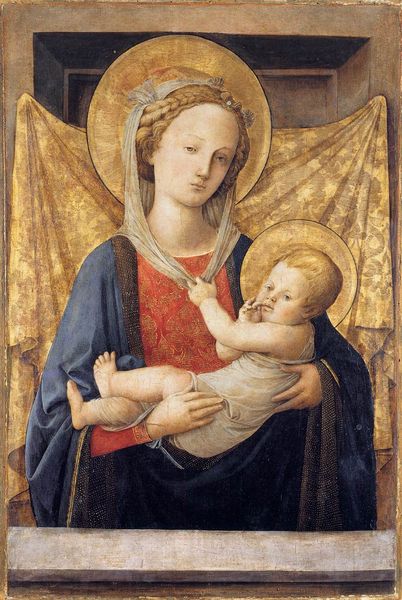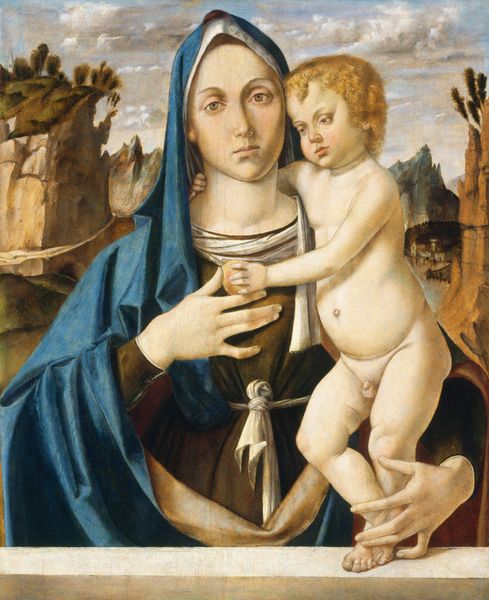
painting, oil-paint
#
portrait
#
painting
#
oil-paint
#
landscape
#
figuration
#
madonna
#
child
#
christianity
#
italian-renaissance
#
christ
Dimensions: 78 x 56 cm
Copyright: Public domain
Curator: Giovanni Bellini's "Madonna with Blessing Child," painted around 1480, offers a serene meditation on motherhood and divinity during the Italian Renaissance. The oil painting features Mary holding the Christ Child, set against a luminous landscape backdrop. Editor: Immediately, what strikes me is the deep tenderness in Mary’s gaze, it's like she's looking right through the viewer. There's a kind of melancholy there too. I can almost smell the oils and feel the cool Venetian light reflecting off those blues. Curator: That emotional depth is very characteristic of Bellini. Consider the social and religious context: images of the Madonna were crucial for both personal devotion and asserting the Church’s power. Mary becomes this intersection of human vulnerability and divine authority. Editor: Exactly. But I find myself thinking about the power dynamics inherent in the pose. He’s blessing, yes, but he is still totally reliant on her embrace. It's interesting that this imagery of the dependent baby and his mature and loving mother became so important. What an interesting tension in what’s clearly trying to offer up stability. Curator: I agree, there's an inherent tension there. The Madonna's gaze, in particular, speaks to the burdens and sacrifices motherhood demands, even of the divine. It almost questions conventional Renaissance gender roles in its nuanced approach to Mary as both a queen and a mother. Editor: It’s profound, isn't it? And think about the technical mastery here. The way the soft light models their forms, the sfumato effect – like a breath on a cold window – creates a sense of intimacy and makes it timeless. A Renaissance classic indeed. Curator: Absolutely. Thinking through the art with contemporary frameworks – post-structuralism or queer theory for instance– pushes us to question not only the assumed heteronormative narrative within Christian art, but its role in upholding political structures. It is at its base the figure of powerful maternity as the model for all societies of power. Editor: In the end, isn't it the layers of emotion, both maternal and spiritual, that make Bellini's "Madonna with Blessing Child" such a lasting marvel? It feels intimate, monumental, melancholic, and beautiful. Curator: Indeed, reflecting on art through sociohistorical and theoretical lenses allows for a richer understanding of the intricate threads connecting power, religion, and artistic representation, while appreciating that raw intimacy.
Comments
No comments
Be the first to comment and join the conversation on the ultimate creative platform.

